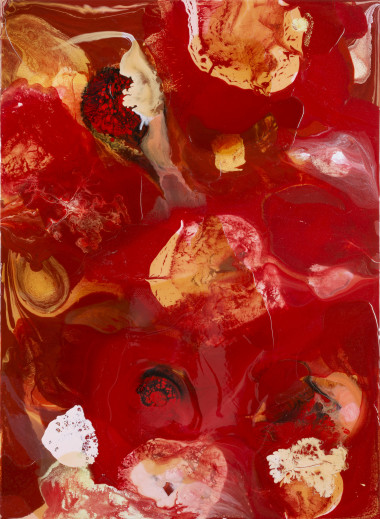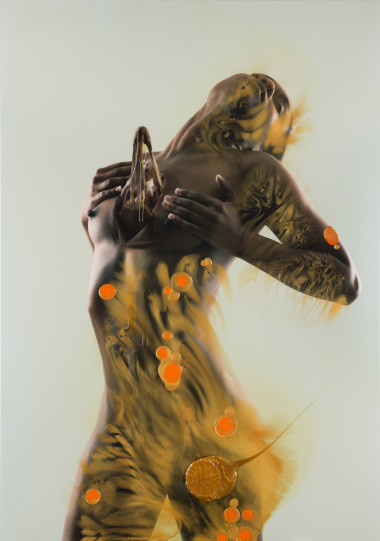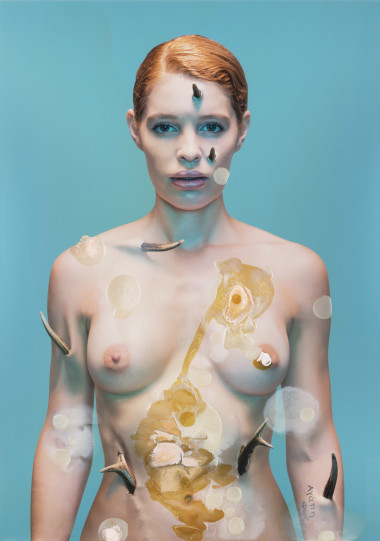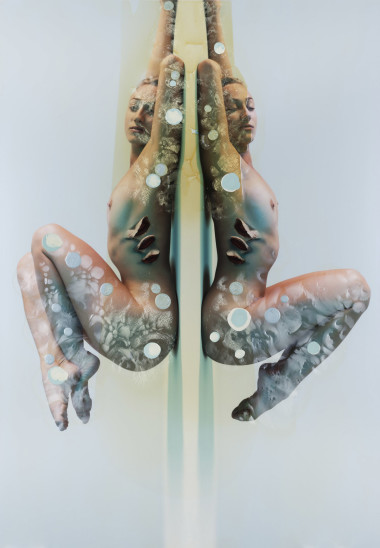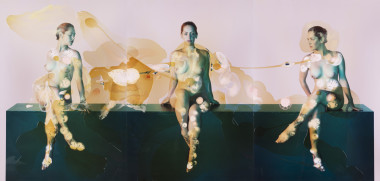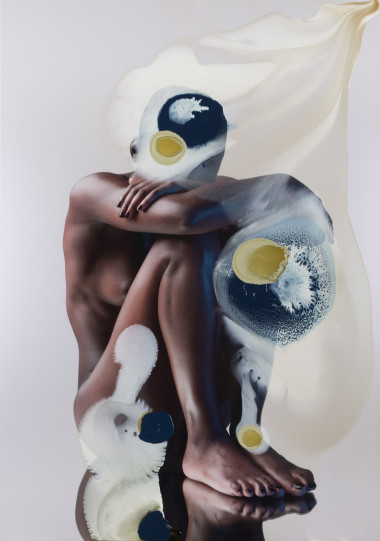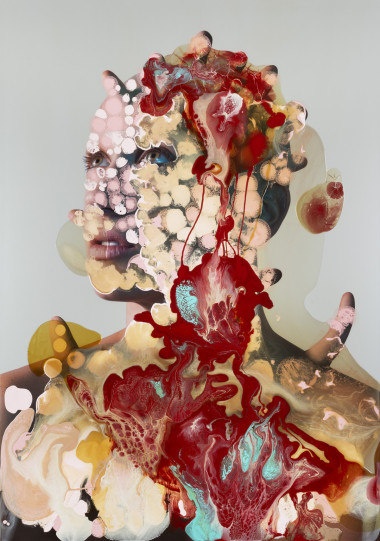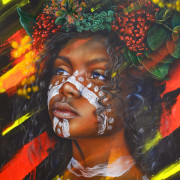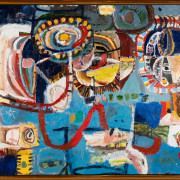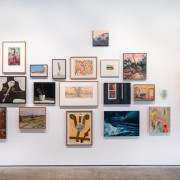Live and work in Melbourne
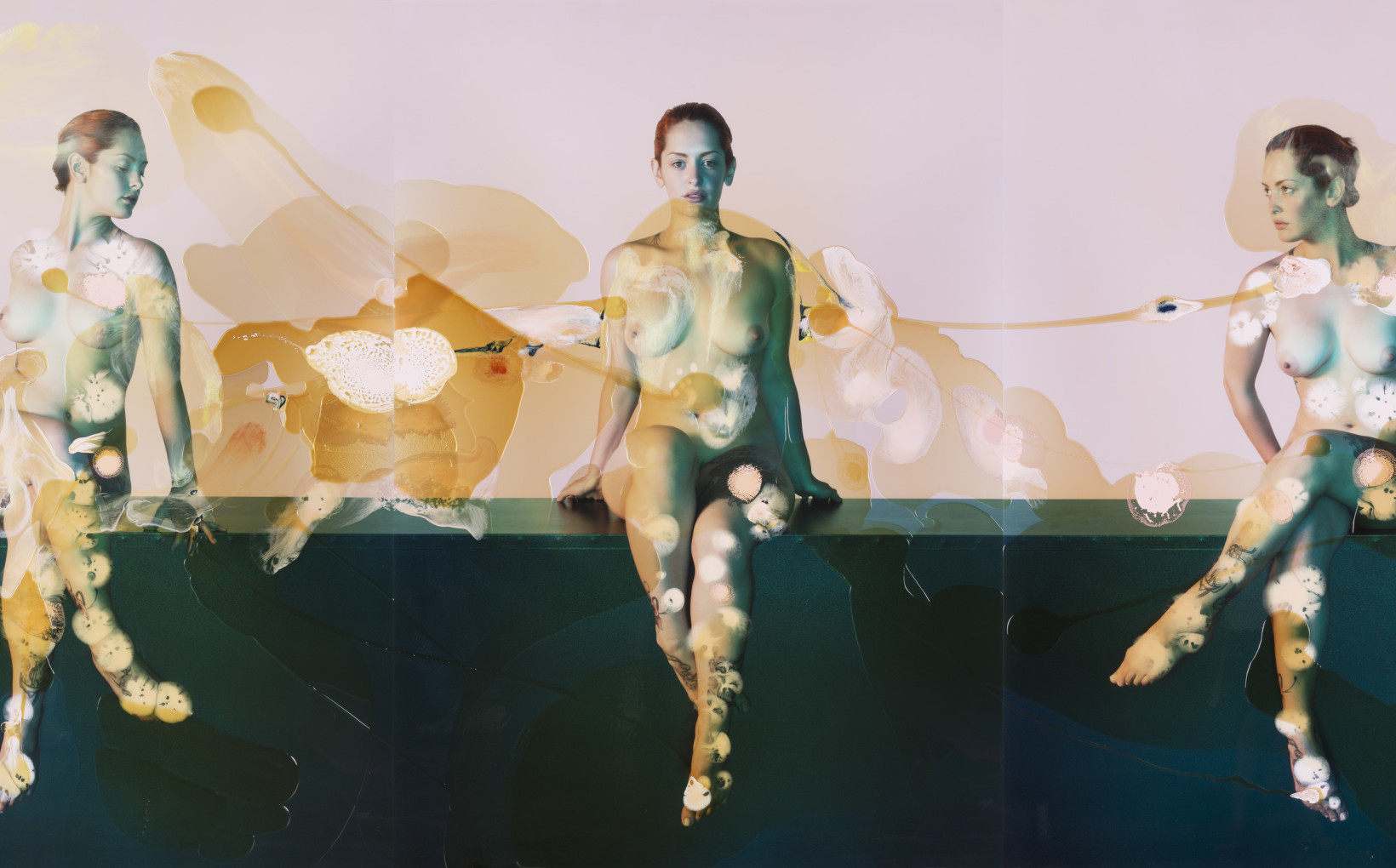
Thou Shalt Not Clone
The surgeons go to work with delicate care, rubber gloves correctly adorned. The stench of chemicals fills the room while they delicately confer and occasionally battle over the correct intervention on the body. Brows furrowed, they eventually agree on the correct technique, the proper way to treat each growth, each wound. Professionally distanced, they cannot help but notice the beautiful creature upon which they work; the perfect hands, the slightly raised aureoles, the ideal curve of hip and thigh.
One of the resulting illustrations of this operation is titled Dermochrome (2014), the name taken from the Portfolio of Dermochromes by Professor Jacobi, a lavishly illustrated tome of skin deformations from 1903. An accompanying work, the same operation viewed from another angle, is dubbed Achorion schoenleinii (2014), referring to now all but eradicated fungal growth that was once often mistaken for leprosy. Given that much of the content of her head seems to be oozing onto the steel of the archaic-looking medical table this would suggest a fungus on the move, a fungus with horrendous ambitions.
Hormones are the kind of thing that Doctors Doble and Strong refer to when undertaking their illustrations. They are nothing if not thorough in their research.
The doctors are experts in splicing and cloning. They have the magical skill of combining exquisite beauty with the unexpected, of arousing inexplicable desires amidst the world of ‘body horror,’ a term used to describe the films of David Cronenberg.
Sometimes these beauties, post surgery, adapt to protect themselves. Consider the figure depicted in Lupus Vulgaris: Cornu Cutaneum Study #2 (2015) who, with her voluptuous lips and perfect breasts, calls out to be held, but in doing so you will impaled by razor sharp shards of keratin, the same material found in your hair and fingernails, but here hardened into antler-like spears. Like Natasha Henstridge in the 1995 American science-fiction horror film Species, she is a siren, both beauty and beast to use the description of Daryl Hannah’s Pleasure Model replicant in Blade Runner (1982). In part inspired by the work of Belgium artist Berlinde de Bruyckere, who has also used antlers in her work, but unlike de Bruyckere, whose sculptures tend to remain faceless, the figure in Vulgaris: Cornu Cutaneum Study #2 stares unblinking at the viewer with a chillingly blank expression, almost dehumanised despite her beauty, her torso splattered with ectoplasm, a massive golden-hued spermatozoa sliding across her stomach awaiting impregnation in order to replicate this new species. Like the clones of Ripley (Sigourney Weaver) in Alien: Resurrection (1997) she is tattooed, but unlike the hints of Holocaust those markings suggested in the film, her tattoo reads “Αγάπη φως Γέλιο”—love, light, laughter. The ghastly irony of this tattoo is that the title of the work refers to painful cutaneous tuberculosis skin lesions that take nodular appearances. These are also known by the Latin name cornu cutaneum, bizarre keratinous skin tumors with the appearance of horns.
For their masterful triptych, Playing God (2015), the Doctors have borrowed the structure of Francis Bacon’s 1969 masterpiece Three Studies of Lucian Freud. The unblemished perfection of Uma Thurman in Gattaca (1997) is reflected in this triumvirate of beauties, which are linked by moist membranes.
Arguably the most powerful and transgressive work in this series is Anunnaki, named after a group of deities from ancient Mesopotamia. Anunnaki (2015) is in the process of giving birth, via her chest, of the skull of an ostrich. The incursion of physical/alien objects in the body is a powerful one, a kind of appendage porn—consider the birth of the alien in Ridley Scott’s Alien (1979) via William Hurt’s abdomen, or the emergence of the baby’s head atop Henry (Jack Nance) in Eraserhead (1977). However, Anunnaki has its strongest correlation with a bizarre scene in Matthew Barney’s River of Fundament (2014), which ironically neither Dr Doble nor Dr Strong had seen, in which Aimee Mullins, as the goddess Isis, gives birth in a decidedly graphic moment. The camera focuses in on the extended orifice of the vagina, which begins to pulsate vigorously until what emerges from the vaginal canal is the bald head of a baby falcon. Anunnaki seems engulfed in flames of orgasmic energy as she gives violent birth to the ostrich skull. The Bushmen of the Kalahari Desert maintain a legend about fire in which their creator-god Mantis felt that humanity was unready for the gift of fire, so he entrusted it to an ostrich who kept it shielded it under one of its wings. In Egyptian mythology the ostrich feather was a symbol of Ma’at, the goddess of truth and order. Fire and birth and ecstasy cohere in this surreal masterpiece.
There are times when Doble and Strong appear to be channeling the spirit of Guillermo del Toro.
Metaplasia (2015) suggests pole-dancing from another universe. Replete with fleshy, pink gills these twins are ready for an aquarium orgy. Given that the term ‘metaplasia’ translates as the replacement of one cell type with another it becomes abundantly clear that these ladies are half-human, half-barramundi. Gill-like structures form during the maturation of the human embryo—perhaps with impending sea-level rises these bodies have simply been adapted for a watery future (we try to avoid thinking of Kevin Costner’s gills in Waterworld.) Human/animal melding, whether for practical purposes (survival) or augmentation (fashion), is also at the core of Xenotransplantation (2014), in which our subject is embellished with horns.
The transplantation of living cells, tissues or organs from one species to another is a complex affair, illustrated here in Solitary Nucleus (2015), where a darkly-hued woman is subsumed by ectoplasm, her entire cellular structure subsumed in the process of complete transubstantiation.
Many artists have played God with the human body, from ancient cave paintings to medieval art through to Hans Bellmer, Joel Peter Witkin, Cindy Sherman, Berlinde de Bruyckere and others. But only Doble and Strong have melded the aesthetics of Vogue stylishness with the grotesqueries of Gray’s Anatomy. These are text-book images for the next generation of life.
Whether purely science fictions or moral warnings, Doble and Strong’s clones and mutants retain an indisputable elegance and beauty. They are the Goddesses of a new world, adapted by the good doctors playing god in order to survive a strange and unpredictable future.
Ashley Crawford
March 2015
\ Exhibition featured works
\ Other exhibitions
Monday to Friday, 9am - 5pm Saturday, 11am - 4pm Summer 2025/2026 The gallery will be closed from Saturday 20 December until Tuesday 13 January.
